NORTH DELTA — What defines a self-made athlete?
As the 2019-20 B.C. high school basketball season was coming to an end last March, just days ahead of a province-wide COVID-19 shutdown, it was certainly not a topic I spent much time pondering.
Yet some two months later, I can say with great confidence that it has emerged as a prime topic of conversation as I’ve checked in with high school and university coaches around B.C., as much to say ‘Hi’ as to discuss this most unique time in the history of our game.
Suddenly left without the ability to gather in groups, and faced with an uncertain timetable on their next practice, their next game and even their next season, a generation of young student-athletes for whom the sport had become year-long, and who seem perpetually connected with their peers via the technology of the age, are suddenly all alone on a figurative island.
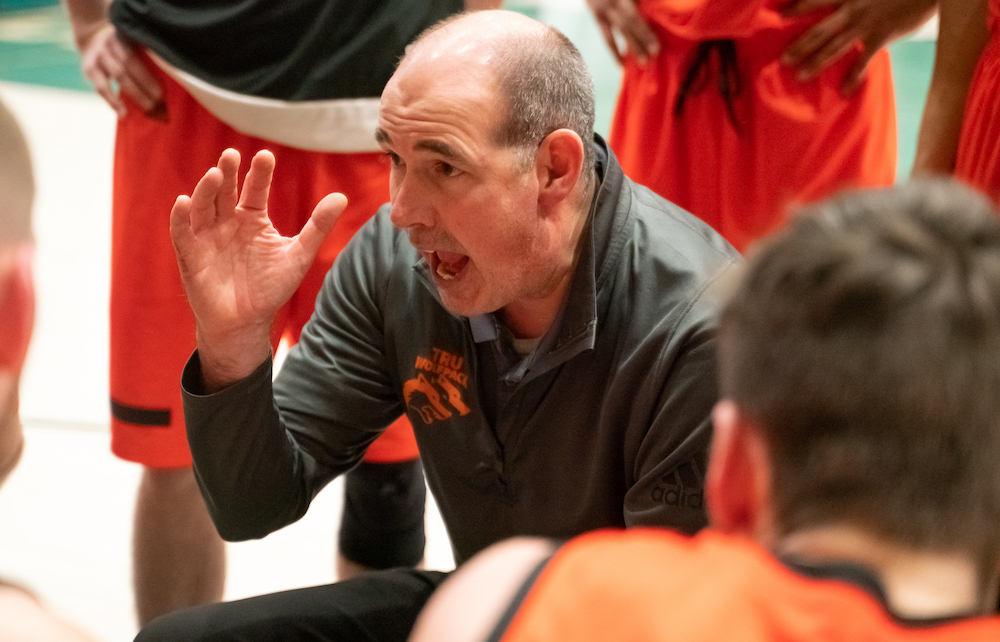
“I think the first thing is, whenever you’re faced with something like this, is that the very best are able to turn a negative into a positive,” begins Scott Clark, who has spent the past 25 years as a head men’s basketball coach in the Canada West, including 15 at Simon Fraser and the last 10 at the helm of Kamloops’ Thompson Rivers WolfPack.
“So if a guy hurts his knee, he will say to himself “I can still lift weights. I can still work on my upper body,’” added Clark.
And what better way could there be to begin any discussion of the elemental qualities most essential to young athletes these days — in any sport you’d care to mention — than through the self-empowering wisdom of the late, great UCLA men’s basketball coach John Wooden.
Stresses Clark: “Coach Wooden had a thing where he’d say ‘Don’t let what you can’t do get in the way of what you can do.’”
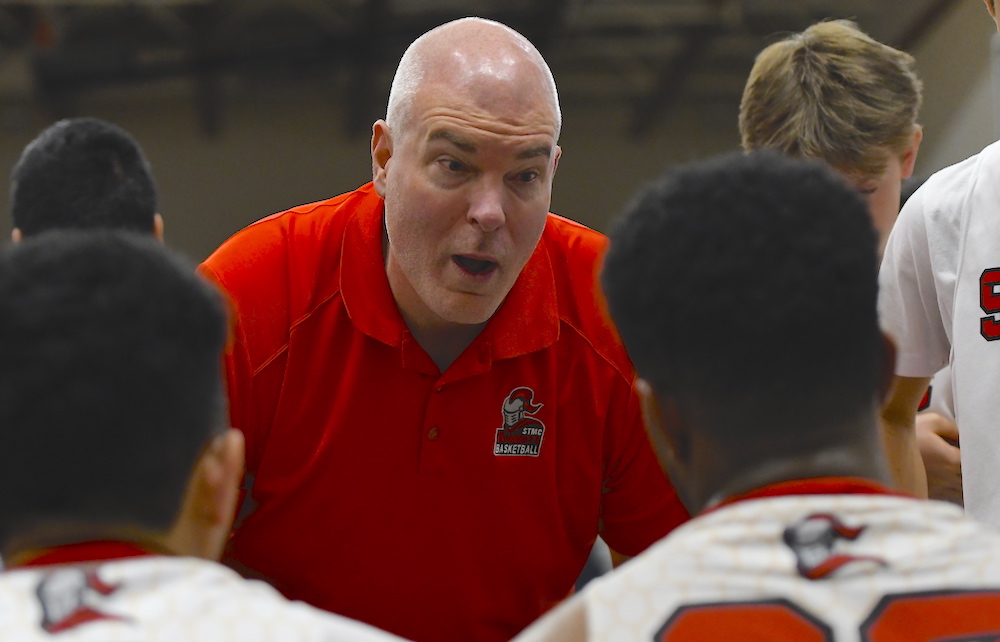
BACK TO BEING ‘OLD SCHOOL’
This is a test. A demanding test.
High school students all over the province are faced with their own unique daily struggles, balancing their on-line learning with many other responsibilities, including care of younger siblings in those situations where parents have had to continue to work outside of the home.
And while the safety of students and their families always comes first, there are plenty of positives to be had from sticking to a schedule.
“The easiest thing for any teen to do right now would be to just get out of every routine, be up way too late, do school work from bed all day, never turn on their screen for their teachers to see them,” says Aaron Mitchell, teacher and head coach of the senior boys varsity basketball team at Burnaby’s St. Thomas More Collegiate.
“Or, they can get themselves into a routine and fight through it, and try to make life as normal as possible” continued Mitchell. “There are so many things they can be learning for themselves right now. It’s a good test for us all.”
So much of that resonates with Trinity Western Spartans’ women’s basketball coach Cheryl Jean-Paul, who urges athletes to use this solitary time as an opportunity to hit the re-set button and re-affirm why it was that the game became their passion in the first place.
“Perspective is everything and I think a most beautiful thing can be that basketball is going back to being about you and a hoop,” explains Jean-Paul, a 1997 grad of Winnipeg’s River East Collegiate, who played at Manitoba and has been TWU head coach since 2010.
“It’s about the dream you had for yourself, and whether it’s organized or it’s coach-less, it really is going back to a way that I remember basketball when I was a kid growing up,” adds Jean-Paul. “It’s dreaming up what you want to become as a basketball player, and I think that is what this time has allowed.”
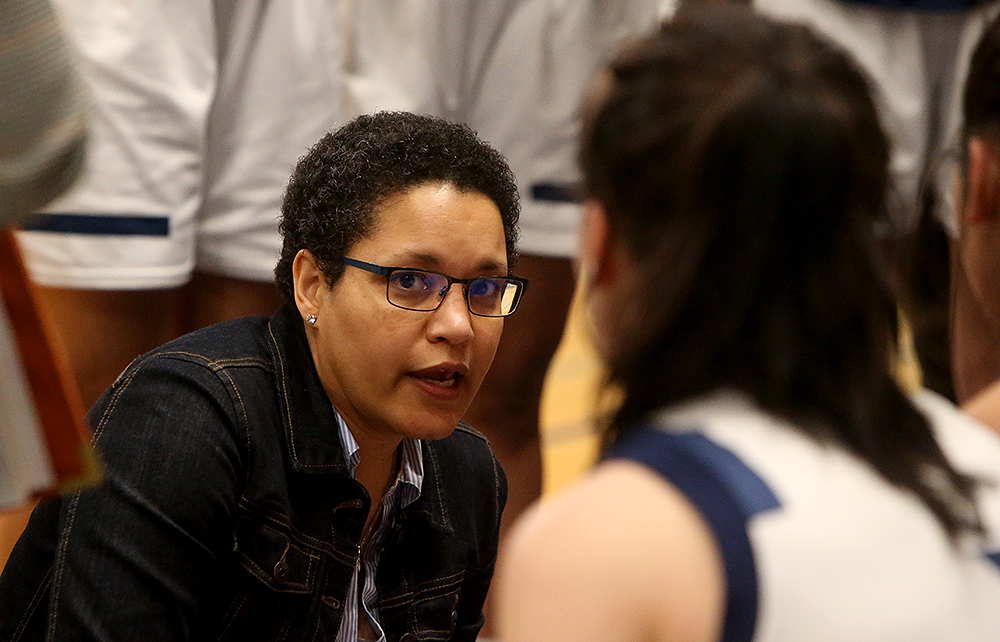
It’s the absolute antithesis of what had become the new normal over the past decade-plus.
“I wouldn’t say that this generation has had to have an intrinsic motivation for sports because we have jam-packed their schedules,” Jean-Paul adds. “They’ve just had to try and survive being an athlete. Now that they have this time and space, I hope this generation finds an internal motivation when no one is watching. I didn’t have a cel phone in high school. I just wanted to get better.”
Thompson Rivers’ Clark can’t see any other way than to keep it simple, adding that in the end, no purposeful effort is going to be wasted.
“You can go for a run, you can improve your conditioning, you can improve your flexibility, you can dribble in your driveway,” he begins. “Again, don’t worry about the things you can’t do. If you don’t have weights to lift, do that when the weight rooms open again. In the meantime, you have all of this time to get in shape. From a sports science standpoint, it’s way better to lift weights first, and then run, but we have to throw sports science out the window a bit right now. If you don’t have weights, you can still put on your runners and go for a run.”
The way Jean-Paul sees it, you can start small.
“Just pick one or two things, get after it and see the improvement,” she says.
In the end, whatever equity you put into the game will reveal itself when normalcy returns.
“People will know what you’ve done the second you step back on the court, whenever that is,” Jean-Paul says. “I don’t need to see hundreds of clips of you doing it (on Twitter). I’ll know if you were shooting threes in your driveway. So in that way, it’s going back to its core, back to being old school.”
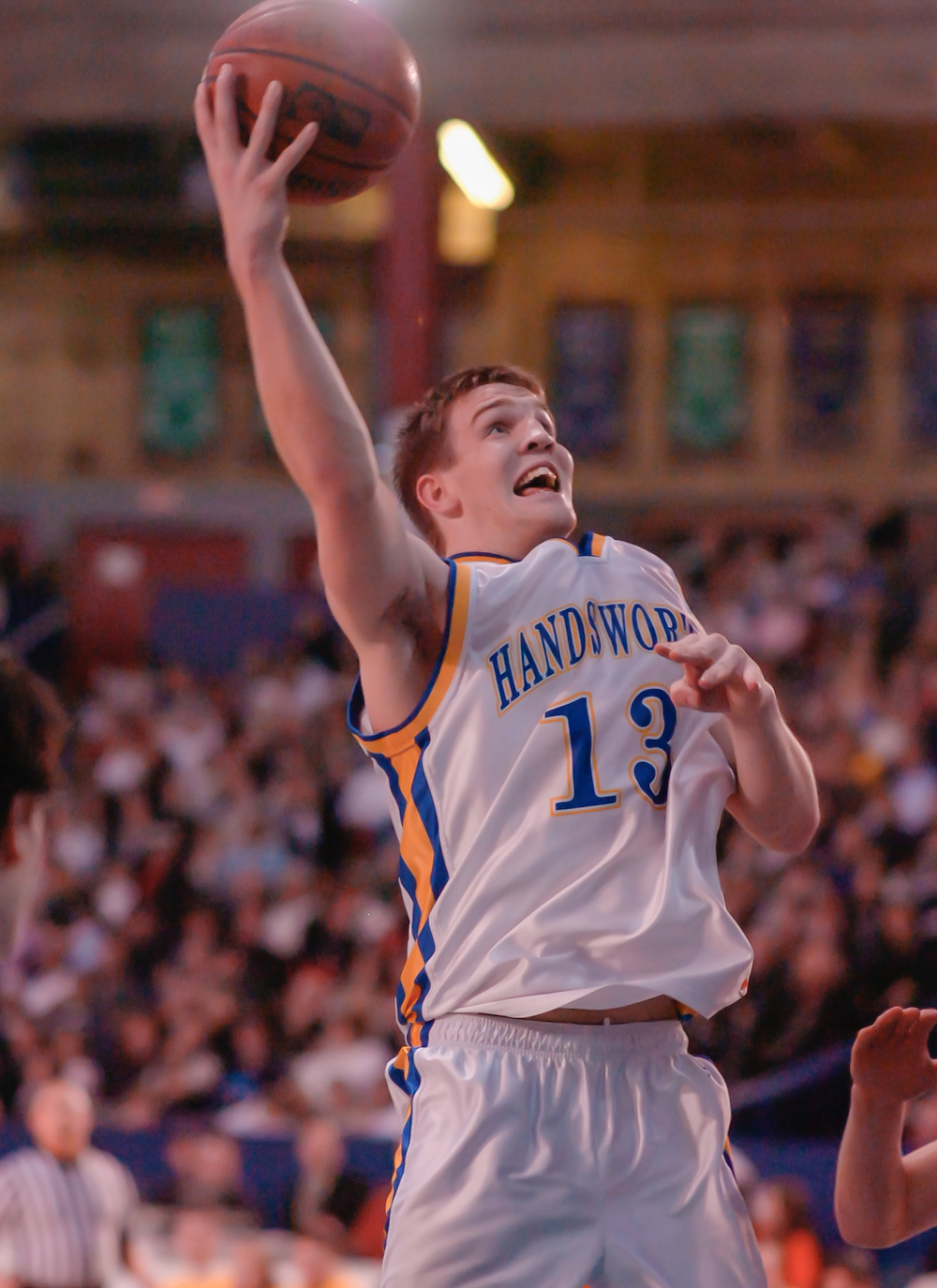
QUINN KEAST: A SELF-MADE PLAYER
As I thought back on the many basketball players I have written about in the province of B.C. since I first became a reporter back in the early 1980’s, one whose story I told early in his senior year of 2005-06, seemed to best capture the spirit of the self-made player.
From the first time I watched Quinn Keast play for North Vancouver’s Handsworth Royals, I was struck by the way in which you so instantly saw the level of his effort before you saw anything else he had within his deep duffle bag of qualities.
It was in December of 2005, early in his senior year, that Keast told me all about a gruelling off-season goal he had decided to take on so that he might better compliment the team’s star and future L.A. Lakers big man Robert Sacre.
There was obviously no pandemic that summer, and no need to self-isolate from his Royals’ teammates.
Yet Keast, who had lost much of his Grade 11 year to tendinitis in his knees, was determined to be the best he could be for his teammates. So he told his head coach, Randy Storey, that he would shoot 100,000 jump shots over the summer, instead of the 30,000 Storey initially challenged him to take.
To boot, Keast took on the self-imposed challenge by shooting at a basket in the driveway of the family home which sat on a fairly steep incline.
He also, in a show of maturity beyond his years, politely answered the concerns of one of his neighbours who had complained about the unrelenting noise of leather hitting pavement, by negotiating his own 10 p.m. curfew.
Keast even found a way to exercise the family dog, a golden retriever named Sugar, by kicking a tennis ball into the cul-de-sac between jump shots.
Hey B.C. high school basketball players… think about that for a second.
How many jump shots could you have taken over these past two months… to be a better shooter and a better teammate? Perhaps you didn’t have to shoot them up-hill. Perhaps you were hampered by other equally-challenging limitations. And how about walking the dog?
As I reported in that story, one I wrote that winter for The Province newspaper, Keast had finished the challenge by the time the school year had begun having no idea if the goal was met or not.
“I didn’t keep count exactly,” he told me. “I just figured that if I took as many shots as I could, it wouldn’t matter.”
As the years have passed, the significance of that response has, for me, taken on a much deeper meaning.
That March, Keast helped lead Handsworth to an 82-65 win over Kitsilano for the B.C. Triple A championship title, and was named the Game MVP with 16 points, 17 rebounds, five assists and four steals.
Three months later, however, Keast passed away at the age of 18 when he was struck by a bus on his way to an after-grad gathering with his Royals’ classmates.
His motto of ‘No Regrets’ has become a part of the daily inspiration and vocabulary of so many B.C. high school student-athletes and it is simply impossible not to be able to apply it in the most positive and inspirational ways, whatever the situation may be.
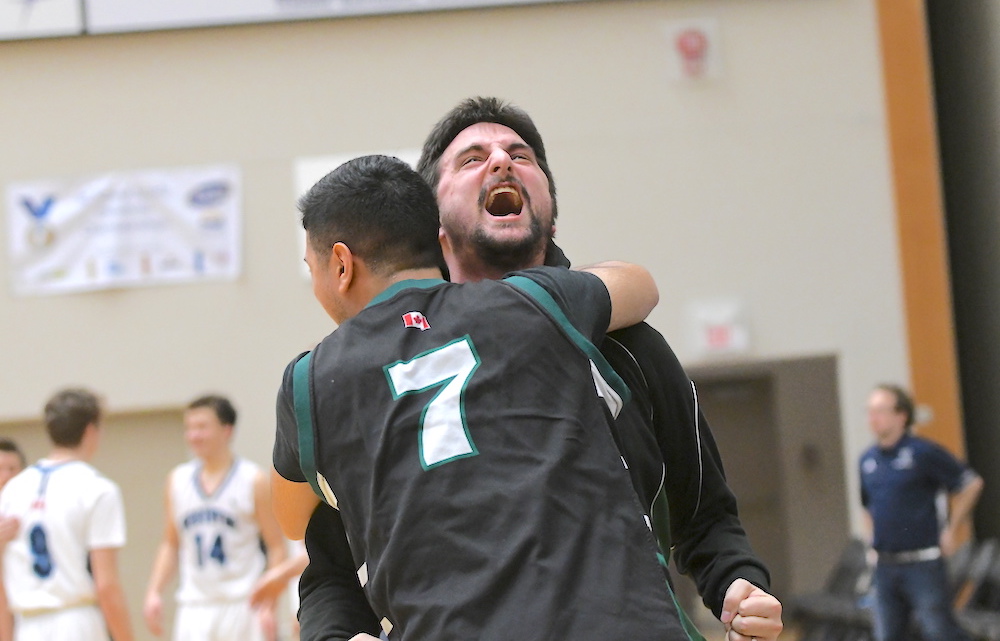
THE POWER OF POSITIVITY
King George Secondary School, located in Vancouver’s West End, is home to the title-contending Dragons’ boys basketball team.
“The one thing for us is that we’re downtown, and they had to take away all of the hoops for social distancing,” admits head coach Darko Kulic, of a campus situated in the heart of a densely-populated urban environment.
So when the coach asked his players what they might do to find their own personal solutions, the answers delivered a few days later via Zoom meetings were inspiring.
“We gave them some homework on it, and they came back a couple of days later with things you can do on your own,” said Kulic, who has led the Dragons to two of the last three B.C. senior boys Double A championship finals. “It was so cool. They were getting ideas from YouTube, and even creating their own ideas on how to build rims. One of the guys even said that we should go back to (Canadian basketball inventor James) Naismith, and put a bowl against the wall to shoot on.”
Like John Wooden said, it’s not letting what you can’t do get in the way of what you can.
And from that standpoint, one of Clark’s favourite stories concerns Canadian basketball legend Jay Triano, the current lead assistant with the NBA’s Charlotte Hornets, who after finishing his playing career at Simon Fraser, would go on to become the Clan’s head coach.
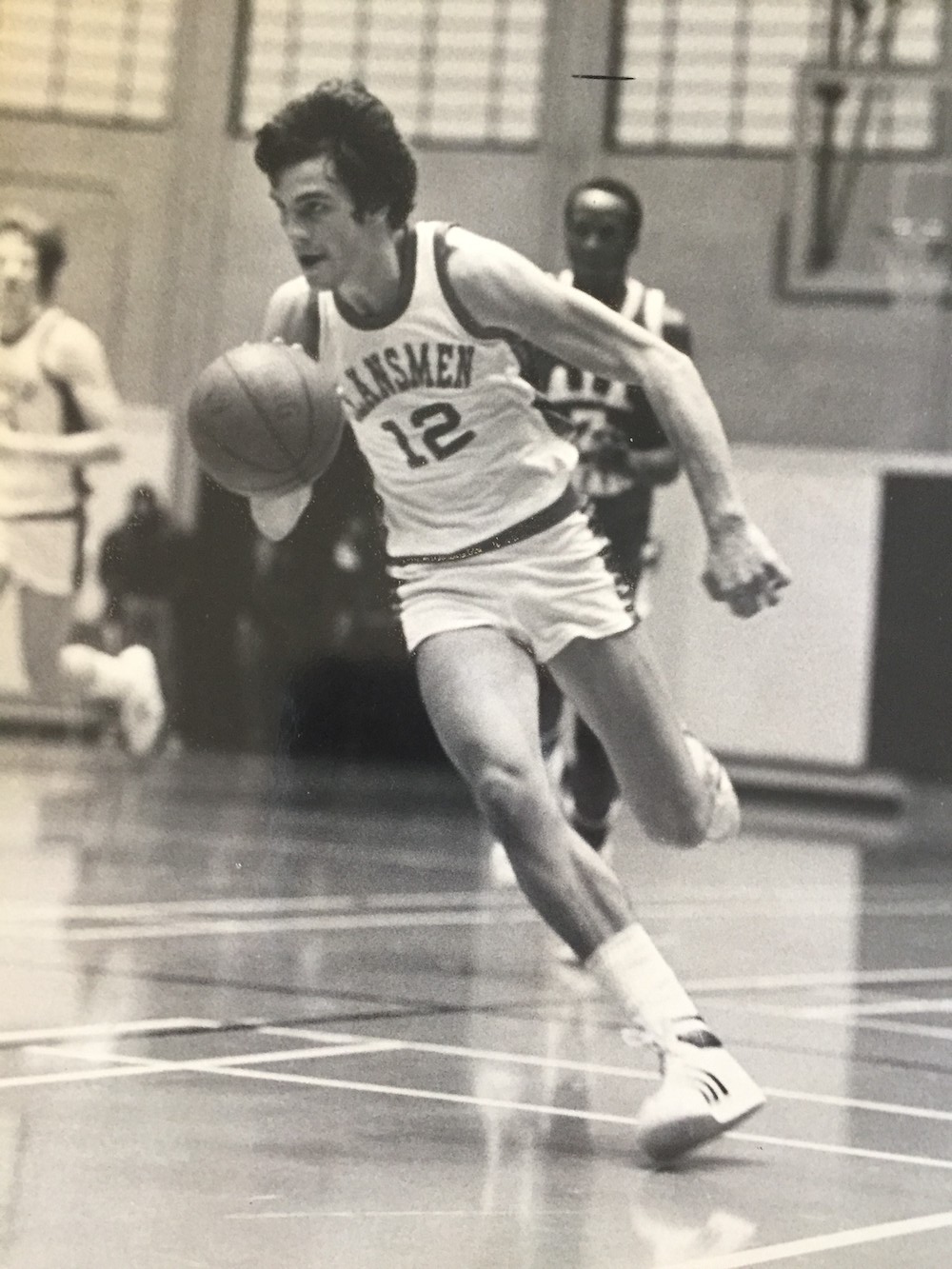
“I think it was Jay’s sophomore year (at SFU) and he broke his right wrist,” says Clark of Triano’s shooting hand. “As a young kid, Jay was a very good athlete. He was a guy who could get to the basket and finish, and he was a good shooter… but maybe not a great shooter.”
Yet what most impressed Clark, whom Triano would later bring onto his coaching staff at SFU, was the way the former Raptors and Canadian national team head coach refused to let a tough situation impede his development as a player.
“When he came back from the broken wrist, he said that as part of his rehab they told him ‘OK, now you can shoot from two feet, now you can shoot from four feet’ and he said he really had to work on his shooting mechanics,” said Clark.
“Jay is one of the most positive guys I’ve ever been around,” added Clark. “To me it’s unbelievable how he could see things like that in a positive light. But he just said ‘OK, I broke my wrist’ so he rebuilt his shot and he became a better shooter after something bad had happened.
“The players that are really successful… they have that ability to turn negative things into positive things.”
For high school athletes around the province in any sport looking to find connection and focus amidst a most strange and unpredictable time, please let that be food for thought.
If you’re reading this story or viewing these photos on any website other than one belonging to a university athletic department, it has been taken without appropriate permission. In these challenging times, true journalism will survive only through your dedicated support and loyalty. VarsityLetters.ca and all of its exclusive content has been created to serve B.C.’s high school and university sports community with hard work, integrity and respect. Feel free to drop us a line any time at howardtsumura@gmail.com.

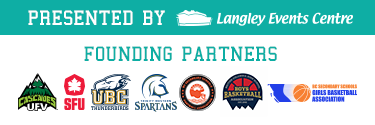
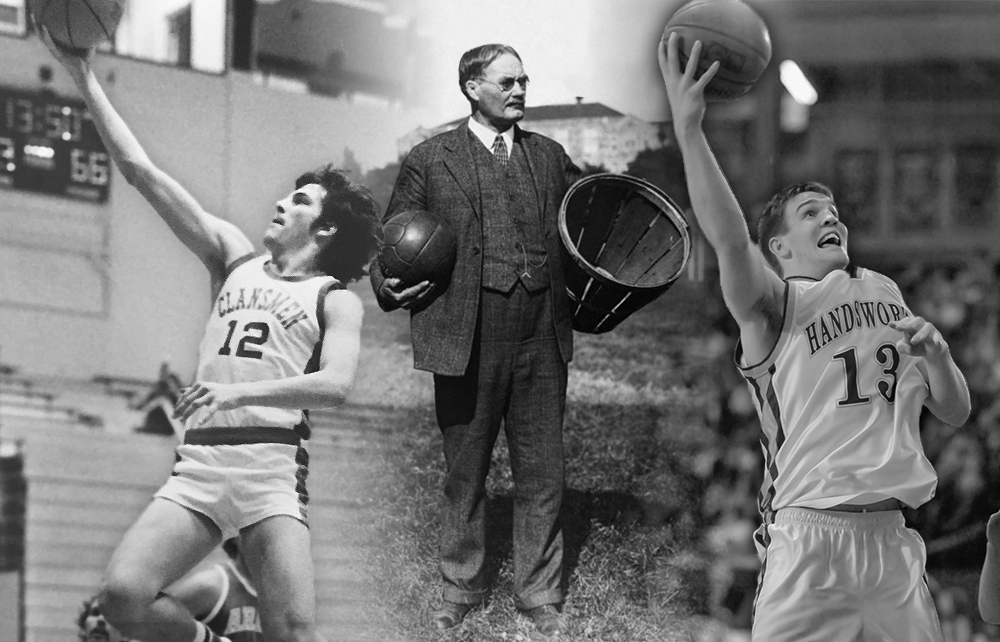
Thank you Howard for your inspiring column. I know Quinn would have been grateful for all you said! We , his family are too.
Jan
I remember that team, your son had a good set of values! My sincere condolences.
Why does no one remember the 83 year of women’s basketball I was scoring 28 pt per game but never noticed won senior basketball women’s player of the year.